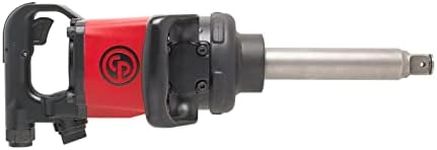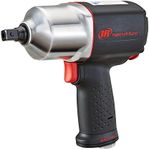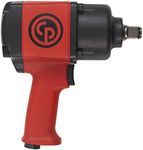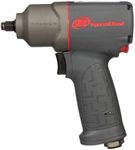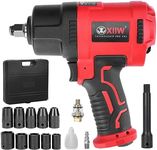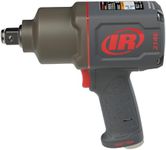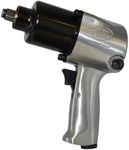Buying Guide for the Best Air Impact Wrenches
Choosing the right air impact wrench can make your work much easier, whether you're a DIY enthusiast or a professional mechanic. The key is to match the tool's capabilities to the tasks you plan to tackle. Understanding the main specifications will help you find a wrench that is powerful enough for your needs, comfortable to use, and compatible with your air compressor. By focusing on the most important features, you can avoid overpaying for unnecessary power or ending up with a tool that can't handle your projects.TorqueTorque is the amount of turning force the wrench can deliver, usually measured in foot-pounds (ft-lbs) or Newton-meters (Nm). This is important because higher torque allows you to loosen or tighten tougher bolts and nuts. Light-duty tasks like assembling furniture or working on bicycles require less torque, while automotive work or heavy machinery needs much more. Generally, wrenches with torque under 200 ft-lbs are for light tasks, 200-500 ft-lbs for most automotive jobs, and above 500 ft-lbs for heavy-duty work. Think about the toughest job you expect to do and choose a wrench with enough torque to handle it, but not so much that it becomes hard to control for smaller tasks.
Drive SizeDrive size refers to the size of the square fitting where you attach sockets, most commonly 1/4-inch, 3/8-inch, 1/2-inch, 3/4-inch, or 1-inch. This matters because it determines what size sockets you can use and how much torque the tool can handle. Smaller drive sizes (1/4-inch, 3/8-inch) are best for lighter, more precise work, while 1/2-inch is the most versatile for general automotive use. Larger sizes (3/4-inch, 1-inch) are for heavy-duty applications. Choose a drive size that matches the type of work and the sockets you already have or plan to use.
Air Consumption (CFM)Air consumption, measured in cubic feet per minute (CFM), tells you how much air the wrench needs to operate properly. This is important because your air compressor must be able to supply enough air for the tool to work at full power. Light-duty wrenches may need 2-4 CFM, while heavy-duty models can require 6 CFM or more. Check your compressor’s CFM rating and make sure it meets or exceeds the wrench’s requirement. If you plan to use the wrench for long periods, a higher CFM compressor is better.
Weight and ErgonomicsThe weight and design of the wrench affect how comfortable it is to use, especially for long periods. Heavier wrenches can be tiring to hold, but sometimes offer more power. Lighter models are easier to handle and better for overhead or repetitive work. Look for features like a comfortable grip, balanced weight, and easy-to-reach controls. If you expect to use the wrench a lot or in awkward positions, prioritize comfort and ergonomics.
Noise LevelAir impact wrenches can be quite loud, with noise levels measured in decibels (dB). This matters for your comfort and hearing protection, especially in enclosed spaces. Quieter models are available and can make a big difference if you use the tool often. If noise is a concern, look for wrenches with built-in mufflers or lower dB ratings, and always consider using hearing protection.
Adjustable Power SettingsSome air impact wrenches offer adjustable power or torque settings, allowing you to control how much force is applied. This is useful for preventing over-tightening or damaging fasteners, and for switching between different types of jobs. If you need versatility, look for a model with easy-to-use power adjustment features. This is especially helpful if you work on a variety of projects with different torque requirements.
